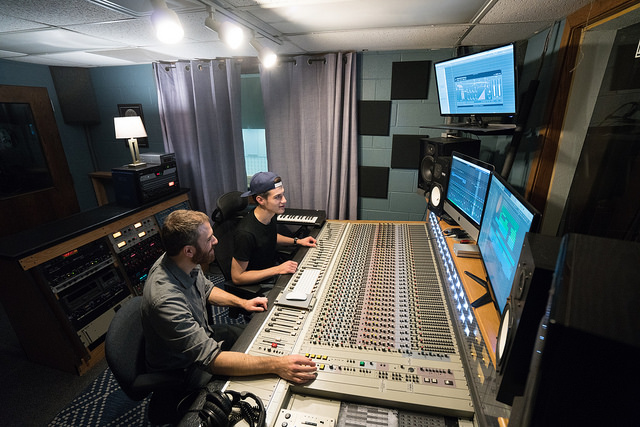Theatre department performs final show
May 3, 2018
“Over the weekend, the UW Oshkosh theatre department performed “The Tempest” as its final production of the school year.
The production was successful with a total of nearly 700 people seeing the show over a four-day run.
In attendance, there were 180 people on Thursday, 165 people on Friday, 165 people on Saturday and 175 people on Sunday.
UWO junior Kaitlyn Polka, who played Trinculo, said that thought the performances went well even if there were mishaps because that’s what makes theater entertaining.
“The fun of live theater is dealing with the little hiccups that come your way each day,” Polka said. “No show is exactly the same.”
Polka said everyone did well at keeping enthusiasm the play required throughout the weekend.
“The cast did a great job keeping up their energy for the whole run,” Polka said. “I think the performances really showed that.”
Polka said the chase scene between Trinculo and Stephano was the best because it had a good reaction from the audience due to its funny introduction to the second act.
“It is the second scene of act two, and it lets the audience know that they’re in for some fun in the second half of the show,” Polka said.
UWO student and sound designer Peter Abraham said that despite time being restricted the performances still did well because of the dedication of everyone involved.
“Snowpocalypse pushed rehearsals back a week which caused us to be rushed at the end but we were able to manage,” Abraham said. “Juggling a large cast and their personal time commitments with the needs of the show was challenging but [it] was able to be pulled off due to the students and actors being able to put in some extra work to make up for lost time.”
Abraham said that the use of sound effects pulled the audience into the play more because it added a sense of emotion, like the music in the shipwreck scene or the thunder used in a couple different scenes in the play.
“When Caliban is hiding under his blanket, unless you were listening to the dialogue closely, you might not have known the context for which he was sheltering himself from,” Abraham said. “With the overlaying thunder and wind you understand that a storm is rolling in and he is seeking shelter. Similarly when Ariel ruins the party by howling at the men, the thunder crack is used to give her entrance a more sudden jolt to not only startle the characters but the audience as well.”
Abraham said the microphones used on two monologues were specifically used to emphasize that magic was being used by those characters.
“When Ariel is instructed to take the appearance of a harpy and crash the party, we amplified and augmented her voice a little to make her stand out and give her a more deafening sound,” Abraham said. “When Prospero is casting his final spell as a sorcerer we had him miked with a similar effect as Ariel had to show that magic was being used.”
The show’s lighting designer, Mick Alderson said the performances did well even with a few mistakes that were made.
“While there are always a few bobbles with live theater, the mistakes were very few, and most weren’t apparent to the audience,” Alderson said. “The audience seemed to enjoy the shows and that’s the important thing.”
Alderson said they used a rake, a sloped platform, that covered most of the stage to help better show movement and distance of the actors so that the audience could get the best view.
“It is often difficult to tell how far apart the characters are on stage,” Alderson said. “The rake and scaffold offered a much more three dimensional environment to set up stage pictures with a view like what you might get if we had a balcony.”
Production dramaturg Christine Roth said the shows went well especially with two characters having different responses to the same situation.
“I think the performances were successful,” Roth said. “The staging was really creative, and Ariel and Caliban offered such different and provocative models of servitude and the desire for emancipation.”
Roth said she thought the best scene was the opening scene of the shipwreck happening because it pulls in the audience immediately.
“It began the play with an intense spectacle that grabbed the audience’s attention,” Roth said. “Innovative staging like that, which transports the audience to an imaginative space, illustrates the kind of theatricality and magic that drives “The Tempest”.”













